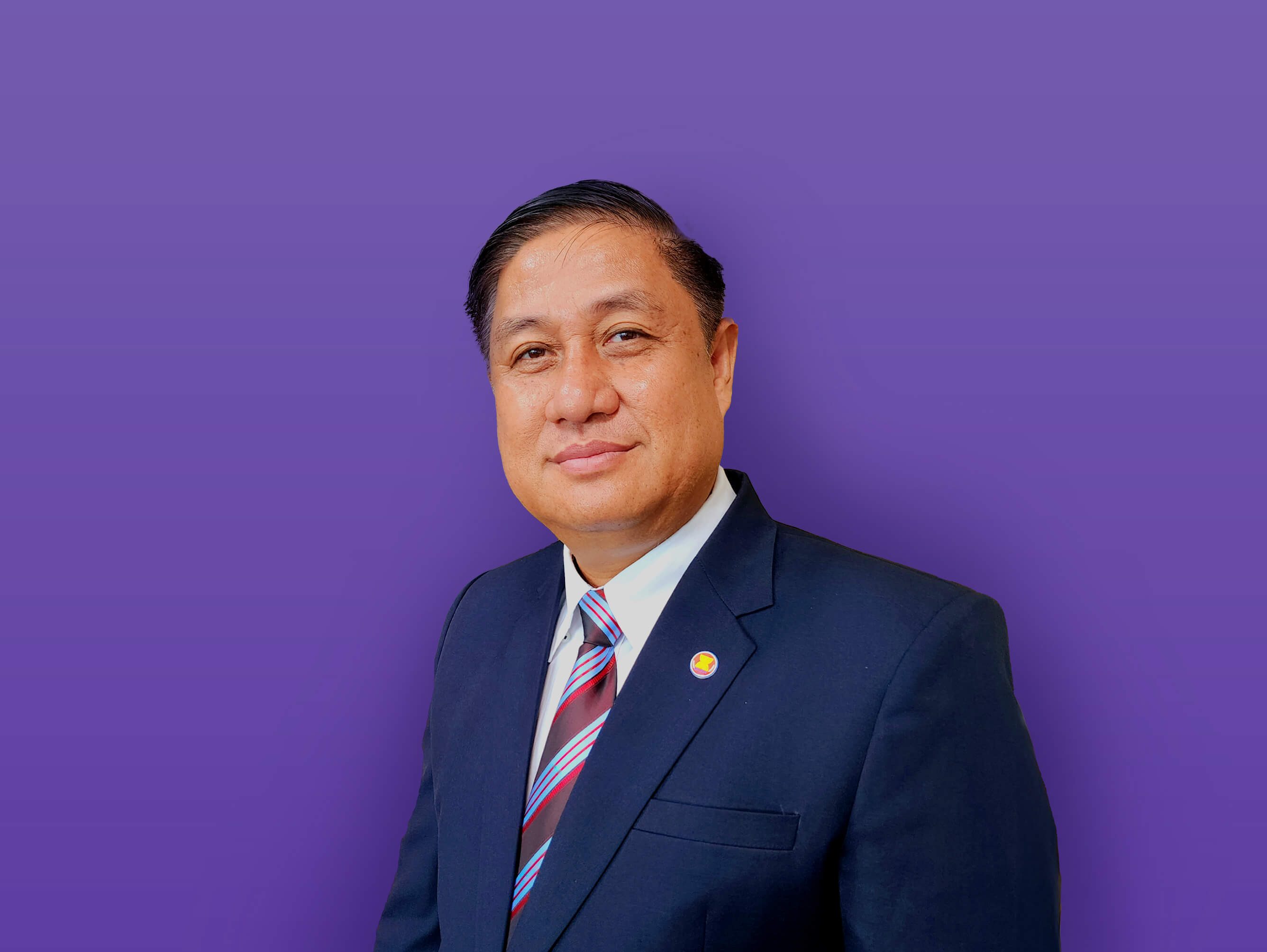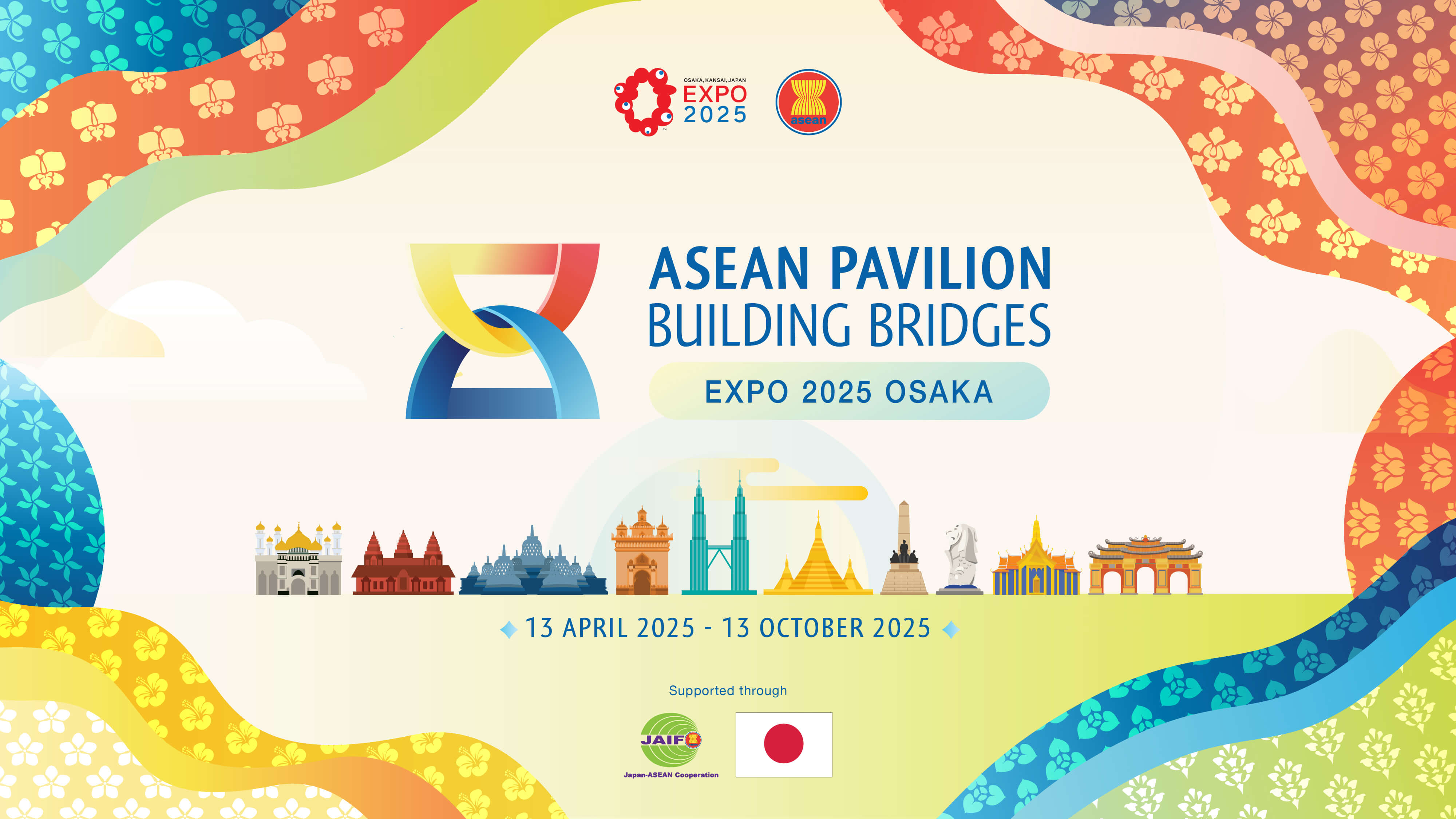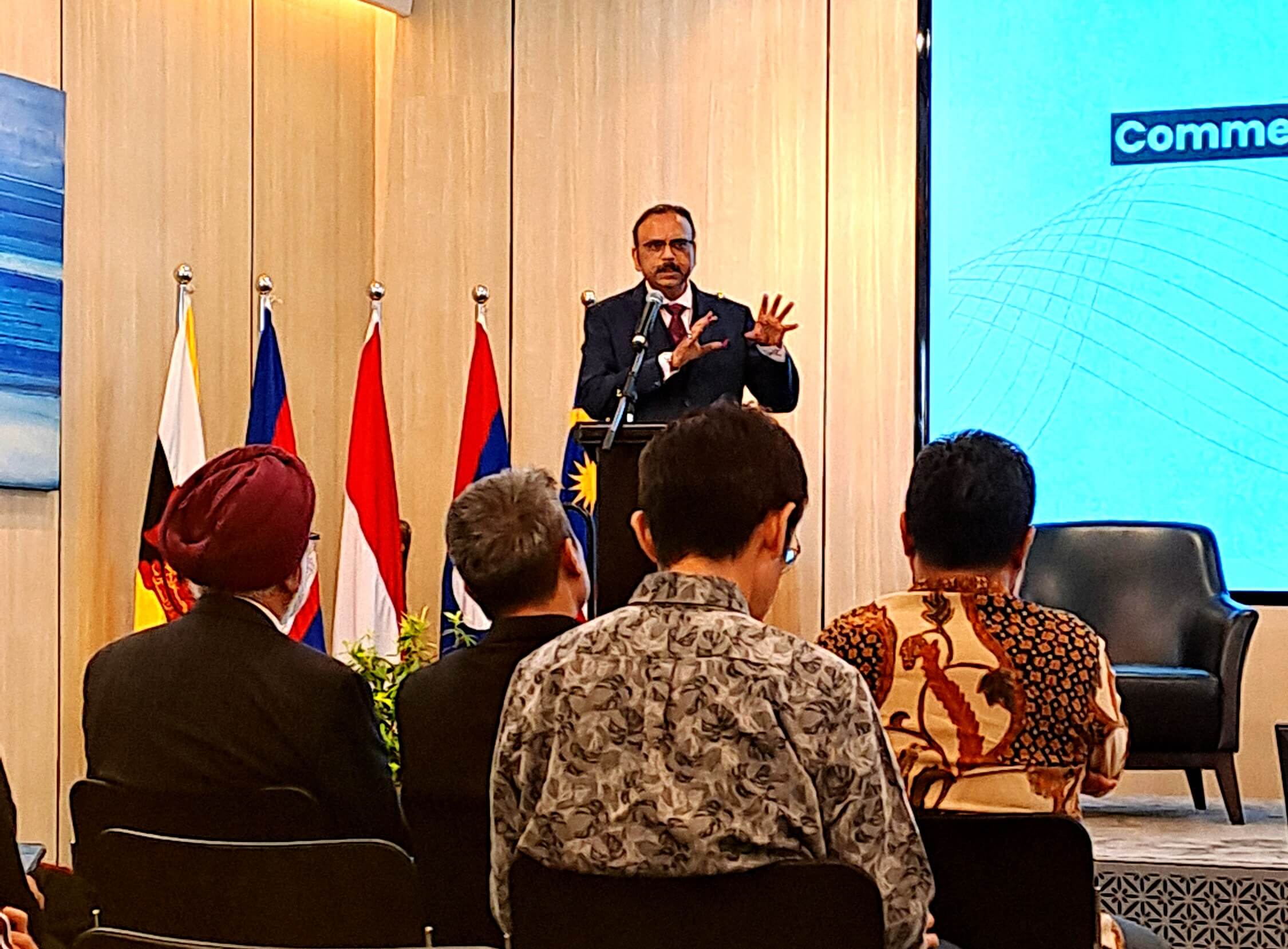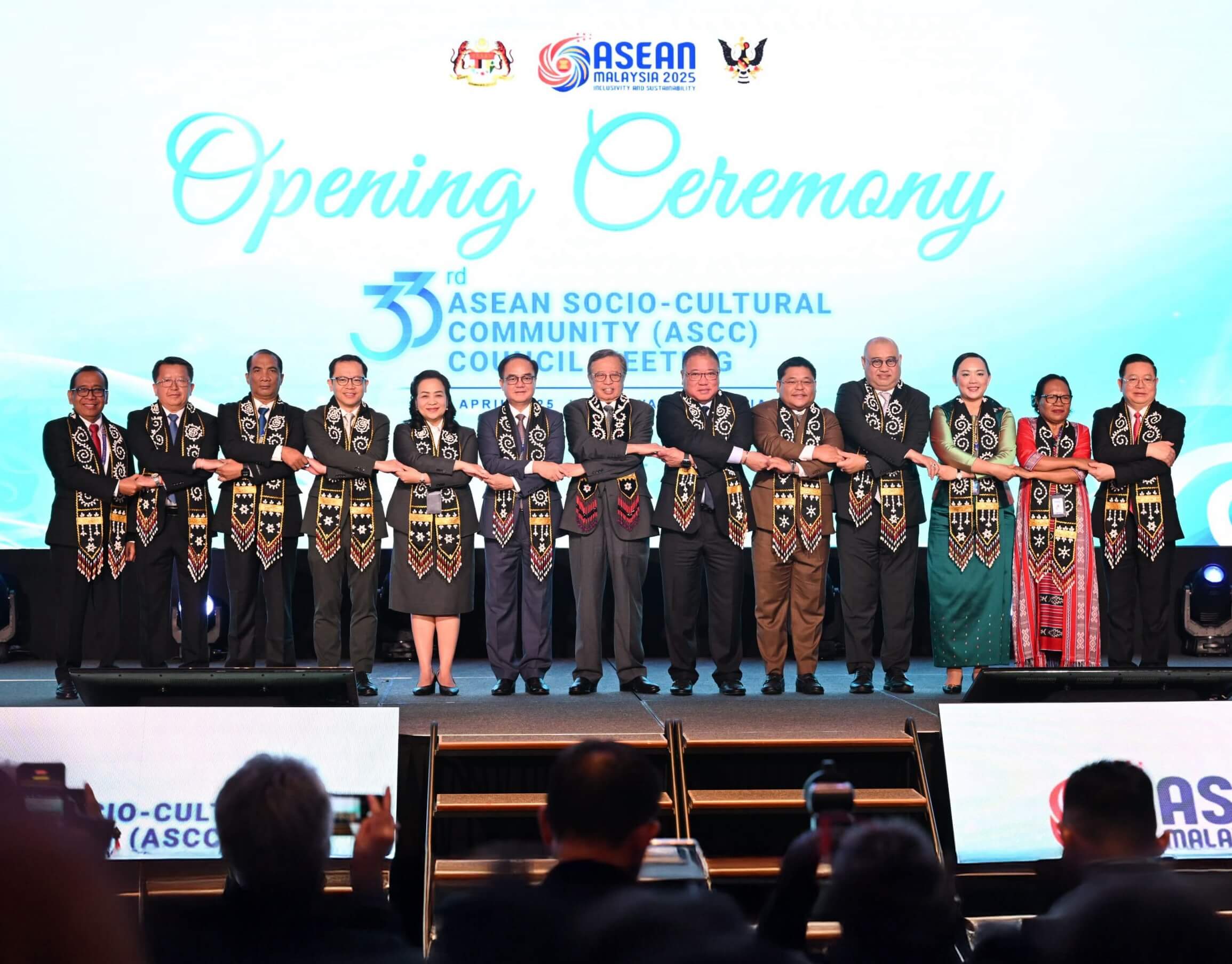



We often tell our youth that “the world is your oyster” as they embark towards their adult life, and they can do anything if they put their heart and mind into what they wish to achieve—from education choices, career aspirations, or to be at the cusp of other adventures yet to be determined.
As a community of opportunities for all, where the people of ASEAN are “closely intertwined and mutually reinforcing to ensure durable peace, stability, and shared prosperity in their region” (ASEAN Secretariat, 2003), ASEAN has a strong foundation to provide opportunities and chances for the life journey of our people in ASEAN.
Since its establishment in 1967, ASEAN has become a venue for cooperation in the Southeast Asian region, maintaining peace and stability with its non-interference policy. ASEAN is also deeply committed to enhancing the well-being and prosperity of the ASEAN Community. With its numerous initiatives in areas such as education, poverty eradication, and health, ASEAN has uplifted living standards and improved access to essential services for millions of people in the region. Furthermore, the emphasis on people-to-people connectivity has strengthened social bonds, creating a sense of unity and solidarity among diverse cultures and nations. ASEAN must be able to build on our peace and shared prosperity.
But how well the region does, and how ASEAN will be in the next 20 years, will depend on our ability to evolve and develop resilience in the face of uncertainty and disruptions. The world has become more challenging, and we are reminded of the complex developments that are taking shape in the world and in our region. Geopolitics in our region continues to be shaped by complex relations between major powers. The global economy is also facing higher inflation pressures and interest rates. Disruptions to the global supply chain triggered by the COVID-19 pandemic and other developments have increased energy and food prices.
ASEAN is also facing socio-economic challenges such as rapidly ageing societies, urban-rural disparities, the impact of artificial intelligence on education and jobs, workforce relevance, climate change, and the increase in climate-related disasters and public health emergencies. The pandemic has brought into sharp focus the region’s vulnerability to a spectrum of health risks. These include not only infectious and non-infectious diseases but also underscore the region’s heightened susceptibility to the impacts of climate change. All these external developments and regional challenges are testing our resolve to build a stronger and more united ASEAN Community.
There is a Lao saying that “One has to cross upstream, higher up, to come downstream properly” (ຂຶ້ນເໜືອ ເພື່ອຕົກໃຕ້). It means that sometimes we have to work harder than expected for us to reach our goals and dreams. ASEAN is working hard to ensure that we can meet these challenges and ensure current and future generations of ASEAN citizens can reap the advantages offered by a cohesive ASEAN Community.
Developing the ASEAN Vision 2045
As we look towards ASEAN’s future, we are also reminded of an ASEAN Socio-Cultural Community (ASCC) that will need to be resilient, sustainable and thriving. Our Community must not only enhance the lives of our people but also advance the socio-economic development of the region.
The ASCC has made great strides in tackling climate change and increasing resiliency to fostering partnership and technological progress. The ASCC 2015-2025 Blueprint sets the direction and guides the plans of the sectors under the ASEAN Socio-Cultural pillar. The initiatives in the blueprint have since been implemented, advancing our goals in these areas: health, youth, education, poverty eradication, gender mainstreaming, disaster management, labour and civil service, environment, culture, and information.
As we continue to consolidate our Community-building process through the full implementation of the ASEAN Community Vision 2025, we started planning the next phase of the region’s future. The groundwork for ASEAN’s Post-2025 future began early with the adoption of the Ha Noi Declaration on the ASEAN Community’s Post-2025 Vision at the 37th ASEAN Summit of 2020.
In 2022, the High-Level Task Force on ASEAN Community’s Post-2025 Vision (HLTF-ACV) was formed. Comprising an Eminent Person and a High-Level Representative from each ASEAN Member State, and the incumbent Secretary-General of ASEAN, their collective mission is to craft an ASEAN Vision that embodies the aspirations of both the leaders and the people of ASEAN beyond 2025.
Several key milestones have since been achieved in the development of our ASEAN Community Post-2025 Vision, including the Core Elements of the ASEAN Community Post-2025 vision, which pertain to the fundamental components of what ASEAN aspires to be, and recommendations for strengthening ASEAN institutional capacity and effectiveness. We have also gathered inputs from ASEAN stakeholders including from the ASCC.
The three ASEAN Community pillars have also begun extensive preparations to embark on the next phase of developing the attendant documents. At the ASCC, ongoing endeavours encompass the proposed establishment of the High-Level Committee on the ASCC (HLC-ASCC) which will perform an advisory role on strategic matters relating to the ASEAN Socio-Cultural Community building. It is poised to assume a pivotal role in shaping attendant documents that will delineate the path for ASEAN to realise its Post-2025 Vision. Concurrently, the ASCC Research and Development Platforms will generate valuable outputs that will enrich the attendant documents with well-researched insights into the forthcoming megatrends, opportunities and challenges that ASEAN is likely to face beyond 2025., Further, the commissioning of two special editions of The ASEAN magazine, centered around the theme “ASEAN in 2045,” is a testament to the region’s visionary outlook. The inaugural edition, currently within your grasp, marks the commencement of this illuminating series. These efforts are complemented by the recommendations derived from the ASCC Blueprint Midterm Review which will serve as a cornerstone for the attendant document that will guide ASEAN’s trajectory beyond 2025.
What should we look out for?
“Ten mouths speaking are not as good as seeing with one’s own eyes; ten eyes that see are not as good as what one has in one’s hand” (ສິບປາກເວົ້າ ບໍ່ເທົ່າຕາເຫັນ; ສິບຕາເຫັນ ບໍ່ເທົ່າມືບາຍ). It is important that ASEAN leverages new trends and growth opportunities and ensure that concrete actions result from the many Declarations and Leaders’ Statements so that lives and livelihoods can be safeguarded, and ASEAN is able to maintain its attractiveness for global trade and investment. The following are a selection of socio-economic trends and issues that are expected to occupy policy attention in ASEAN in the years to come:
Sustainable Development. Sustainable development will become increasingly urgent. The spotlight will be on our preparedness for future shocks, such as financial and health crises, enhancing economic and digital resilience, addressing gaps in social protection, and transitioning to sustainable and green economies. In line with our commitment to sustainable development, the ASEAN Outlook on the Indo-Pacific, or AOIP, will be a major anchor for our cooperation and partnerships on sustainable development. Through the AOIP, ASEAN has a significant role in advancing the region’s resilience, infrastructure, sustainable consumption and production, poverty eradication, and sustainable management of natural resources.
Demographic Change. Demographic change is affecting all aspects of society. While some ASEAN Member States face the challenge of ensuring sustained economic growth with an ageing workforce, others witness increased numbers of youth and working-age persons.
Currently, half of ASEAN Member States have total fertility rates below replacement levels, which will lead to a shrinking workforce in years to come. There are now around 213 million youth (15-34 years old) in ASEAN Member States. The peak population of just over 220 million is expected in 2038.
ASEAN Member States are already facing population ageing. Singapore, Thailand, Viet Nam, and Malaysia are top among the ASEAN Member States with proportions of populations aged 60 or over and 80 or over, with Thailand and Singapore ageing most rapidly. ASEAN Member States are ageing rapidly due to low fertility and high life expectancy. In 2020, 11.2 per cent of the population or 74 million people are 60 years old or over. The number is expected to double (22.2 per cent) by 2050 (UNESCAP, 2021).
Strengthening social protection of older people alongside health infrastructure and services that targets active ageing and long-term care presents urgent challenges in Southeast Asia.
Care Economy. The growing number of older dependents in the region will exert pressure on the care sector and will necessitate higher investments to ensure adequate support for this older demographic. ASEAN recognises that increasing investments in the care economy can alleviate inequalities and help to meet multiple Sustainable Development Goals (SDGs) by 2030.
Paid care is a rapidly expanding economic sector and a substantial source of employment globally (The Asia Foundation, 2022). Investing in gender equal leave, universal childcare and long-term care services has the potential to generate up to 299 million jobs by 2035 (International Labour Organization, 2022). Notably, the provision of childcare alone could add some 3 trillion US dollars to the global economy each year (World Economic Forum, 2023).
Addressing the large coverage gaps in care services would require an annual investment of 5.4 trillion US dollars, which is equivalent to 4.2 per cent of total annual GDP by 2035 (International Labour Organization, 2022).
Care economy and investments can dovetail into the ASEAN Comprehensive Framework on Care Economy (ACFCE), which was developed during Brunei Darussalam’s ASEAN Chairmanship and adopted at the 38th and 39th ASEAN Summits on 26 October 2021 to further sustainable development and protect different segments of populations and sectors through care work and the care economy.
Digital Transformation. While there has been rapid internet adoption in the Southeast Asian region, where 71.2 per cent of the region’s total population uses the internet, there remains a significant disparity in access to technology in the region. Only 53 per cent of rural children and adolescents have an internet connection at home, as opposed to 72 per cent of urban kids. In Cambodia, the Lao PDR, and Myanmar, only a small portion of homes have access to broadband internet. And while mobile penetration is high in most ASEAN countries, many still do not have access to unlimited internet on their mobile devices. The prices to access digital networks are also too high, thus, limiting internet use.
ASEAN must make progress on four fronts to prepare for the digital future: (i) our people will be required to reskill, upskill, and learn new skills to remain relevant; (ii) we will have to strengthen digital infrastructures; (iii) the digital transformation of businesses is a necessity; and (iv) we must improve digital public services. ASEAN will need to harness digital innovation and accelerate new and existing work on digitalisation for social inclusion, a shared identity, prepare for the future of work and education, ensure a safe and clean environment, strengthen health cooperation, and enhance climate and disaster preparedness.
Environment and Climate Change. Climate change and green growth will remain prominent areas of focus in ASEAN’s policy agenda for the foreseeable future. A recent study showed that 53.7 per cent of Southeast Asians considered climate change an immediate danger (ISEAS-Yusof Ishak Institute, 2021).
The impact of climate change is already evident, with climate-driven disasters posing a threat to human systems as the global warming temperature approaches the projected 1.5 ºC, above the pre-industrial level. Hydro-meteorological disasters have increased over the past 50 years. Of 22,326 disasters in the span of 1970–2019, about half of them were caused by climate, weather, and water hazards. They contributed to three-quarters of all reported financial losses and nearly half of all reported fatalities globally (World Meteorological Organization, 2021).
ASEAN must strengthen its commitments to the global and regional climate agenda. Carbon neutrality is a priority under the ASEAN Economic Community, while the ASCC has been focused on and will continue to pursue community-based climate action, sustainable cities, marine plastic debris, nature-based solutions, and green growth.
ASEAN recognises that the Circular Economy will be crucial in attaining the ASEAN Community Vision 2025 of a “vibrant, sustainable, and highly integrated economies.” It will not only contribute to ASEAN Member States’ commitment to the Paris Agreement on climate change and the achievement of the SDGs, it will also strengthen inclusive decision-making on issues of environment, natural resource management and food security.
Disaster Resilience. The changing disaster risk landscape is expected to exacerbate ASEAN citizens’ vulnerability to disasters.
In 2020, ASEAN experienced 405 disaster events, impacting 19.3 million people, displacing 2.4 million, and causing 227.4 million US dollars in damages (ASEAN, 2022). The 2018 Central Sulawesi Earthquake, climate change, the COVID-19 pandemic, and people’s displacement amplify the intensity and frequency of geological and hydrometeorological hazards. The disaster management sector predicts an increase of disasters from around 400 in 2015 to 560 per year by 2030.
ASEAN has deployed innumerable humanitarian and emergency responses. However, ASEAN will need to overcome challenges in (i) coordination of assistance; (ii) effectively utilising new technologies for disaster management; and (iii) overcoming limited access to and innovation of disaster risk finance and insurance. Disaster risk reduction is crucial for achieving systemic resilience and promoting sustainable development in the ASEAN region.
The way forward
Our future direction should be responsive to changing global and regional developments and challenges. It should also respond to the changing needs of our ASEAN Member States. There should be positive contributions and opportunities from regional integration and community building. ASEAN will need to be a responsible member of the international community. It should consider inclusive and effective relations among the ASEAN Secretariat, ASEAN Centres, and governments.
It should also consider the ambitions or future reforms. It can consider evaluations of our strengths and challenges. There should also be a willingness to reassess our work with a view to augment value-added areas, and discontinue other areas where there are little value or impact. And finally, our future direction should help to ensure a better balance of ASCC’s normative, analytical, and operational work.
I end this article with a final Lao saying that is “one piece of wood will not make a fire” (ຟືນດົ້ນດຽວ ດັງໄຟບໍ່ລຸກ). Strong partnership and cooperation will be needed to ensure that our Post-2025 future can bring tangible impact to the countries and peoples of ASEAN.








